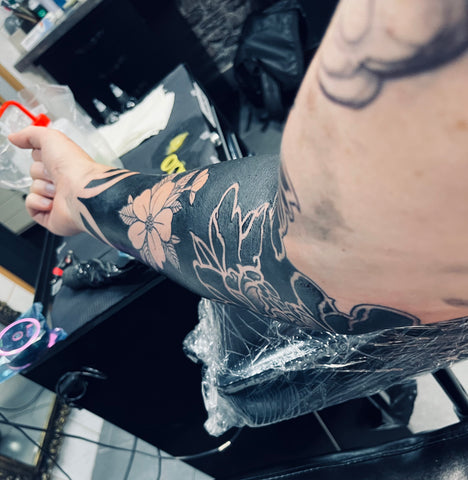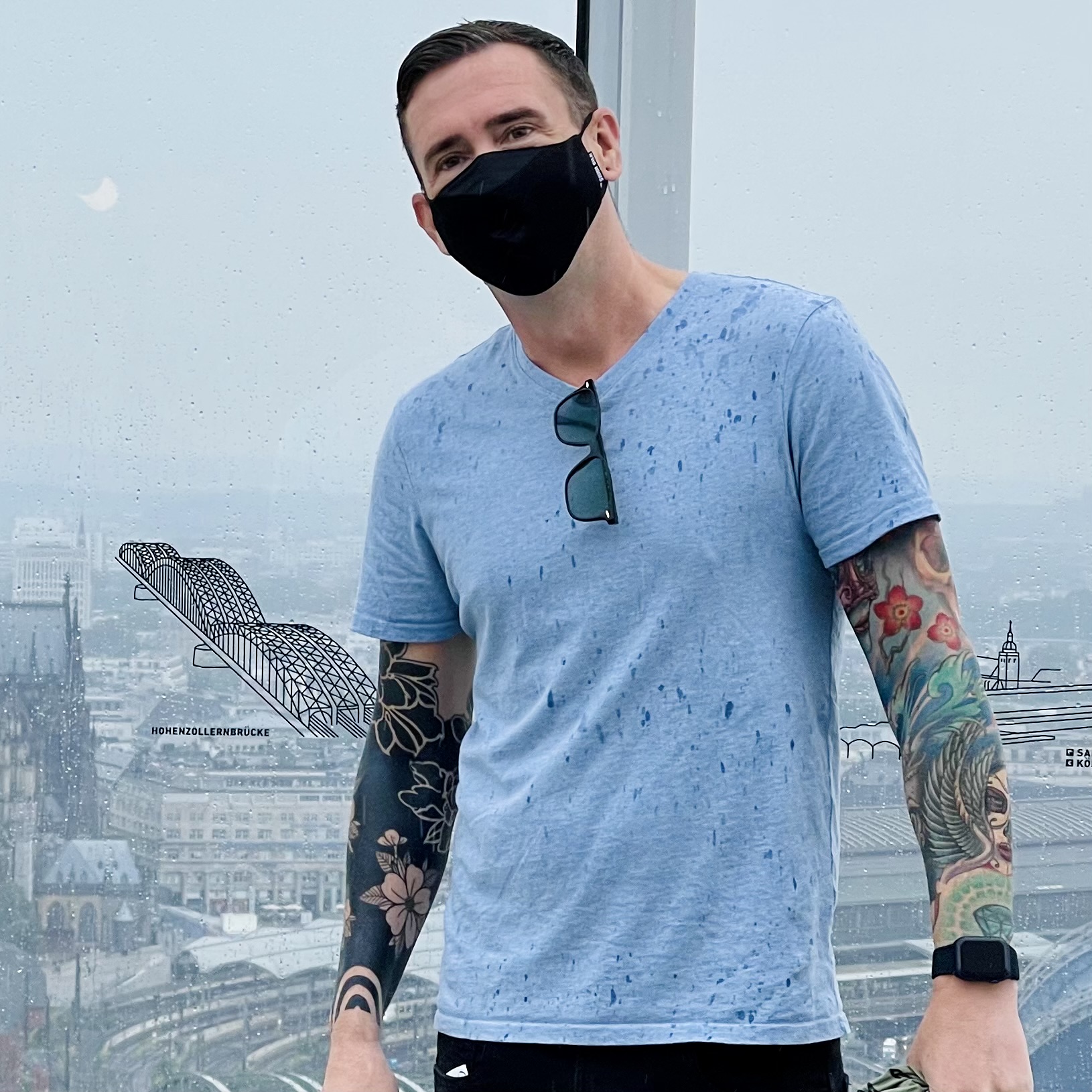Tattooing, a popular form of body art, has gained significant popularity over the years. However, with its rising popularity comes an increased need to ensure the safety and health of both artists and clients.
This article focuses on the importance of sterilization in tattooing, tattoo studio hygiene practices, safe tattooing procedures and tattoo infection prevention. It also explores tattooing sterilization techniques, tattoo equipment cleaning, tattoo studio sanitation standards and tattoo safety protocols aimed at minimizing pathogen transmission in tattooing.
Sterilization and saftey protocols in tattooing
Understanding The Tattooing Process
Tattooing involves the insertion of pigments into the second layer of the skin through numerous needle pricks. The process is carried out using a handheld machine that operates similarly to a sewing machine, with one or more needles piercing the skin repeatedly.
Each tattoo needle puncture deposits tiny ink droplets into the dermis layer of the skin. At a depth of approximately 1-2mm (0.039 to 0.079in).
Tattooing can be performed with or without topical anesthetics, resulting in a small amount of bleeding and potential discomfort. Despite the popularity of tattoos, it’s crucial to understand the risks associated with the process. These risks include skin infections, allergic reactions and bloodborne diseases.
The Risks Involved In Tattooing
Tattoos breach the skin, providing a potential entry point for infections and other complications. The potential risks involved in getting a tattoo include:
- Allergic reactions: Certain tattoo dyes, particularly red, green, yellow and blue inks, can trigger allergic skin reactions, such as itchy rashes at the tattoo site. These reactions can occur even years after getting the tattoo.
- Skin infections: A skin infection is possible after tattooing. Other skin problems such as inflammation and raised areas caused by an overgrowth of scar tissue can also occur.
- Bloodborne diseases: Contaminated tattooing equipment can lead to the contraction of various blood borne diseases, including Methicillin-resistant Staphylococcus aureus (MRSA), hepatitis B, hepatitis C and even HIV.
- MRI complications: On rare occasions, tattoos or permanent makeup might cause swelling or burning in the affected areas during magnetic resonance imaging (MRI) exams. In some instances, tattoo pigments can interfere with the quality of the image.
Importance Of Sterilization In Tattooing
Sterilization is a critical aspect of tattoo safety protocols. It involves killing or removing all forms of life and other biological agents such as fungi, bacteria, viruses and spore forms etc. that are present on a surface, contained in a fluid, in medication or a compound like biological culture media. Sterilization can be achieved through various methods such as heat, chemicals, irradiation, high pressure and filtration.
In the context of tattooing, sterilization is crucial to ensure that the instruments and surfaces used in the tattoo process are free from any potential pathogenic organisms. This practice significantly reduces the risk of transmitting infectious diseases.
Tattoo Studio Hygiene Practices
Maintaining a clean and hygienic tattoo studio is a fundamental aspect of tattoo safety measures. It involves ensuring that all the surfaces, equipment and the general workspace are thoroughly cleaned and disinfected regularly.
Potential clients considering getting a tattoo would be well warned to avoid any tattoo studio that doesn’t maintain the highest levels of hygienic practices. I won’t even consider visiting a tattoo studio unless hygiene is taken seriously.
Here are some hygiene practices commonly observed in tattoo studios:
- Regular Cleaning: Tattoo artists should clean their workspace, including their work surface, chairs and other equipment, before and after each client.
- Use of Disinfectants: After cleaning, tattoo artists should disinfect their environment (chairs, tables, lamps, armrests) and equipment (tattoo machines and guns). They should use disinfectants tested and labeled to kill blood borne pathogens and other potentially infectious materials.
- Proper Waste Disposal: All disposable items should be appropriately discarded after use and before the next customer arrives at the workstation. Needles and other sharps, such as razors, should be discarded in a biohazardous sharps container.
- Sterilization: Once cleaned manually or by an ultrasonic cleaner, all items should be placed in an autoclave to sterilize them. Only place items that can be autoclaved in the machine. Sterilization machines should be regularly tested and serviced.
Safe Tattooing Procedures
To ensure the safety of both the tattoo artist and their client, it is essential to follow safe tattooing procedures:
- Use of Protective Gloves: Tattoo artists should always wear protective gloves during the tattooing process. This helps to prevent skin infections and the transmission of viruses and bacteria.
- Use of Sterile Equipment: Only sterile equipment should be used during the tattooing process. This includes needles, tubes and even the inks used for tattooing.
- Preventing Cross-Contamination: Tattoo artists should be mindful of preventing cross-contamination during the tattooing process. This means not touching anything that is not protected with disposable plastic wraps during the session. And ensuring all equipment and surfaces are thoroughly cleaned and sterilized before and after each client session.
- Proper Hand Hygiene: Tattoo artists should wash their hands before and after tattooing to prevent the spread of viruses and bacteria. This should be done both before wearing and after removing gloves.
Tattoo Infection Prevention
Preventing infections is a vital part of tattoo safety measures. Here are some ways to prevent infections during and after the tattooing process:
- Proper Cleaning of Tattooed Skin: Upon completion of the tattoo, tattoo artists should appropriately clean the affected skin of their client, apply an antimicrobial ointment and wrap the tattoo to prevent the introduction of bacteria.
- Aftercare Instructions: Tattoo artists should provide their clients with instructions on caring for their tattoo until it is fully healed. This includes cleaning requirements and a warning to the client to avoiding swimming in pools or using hot tubs before the skin has healed. In some countries, the client should also be warned about consuming products like pork.
- Use of Sterile Water: Tattooists should use sterile water to dilute inks and when rinsing equipment during tattooing. The use of non-sterile water has led to reported cases of tattoo-associated non-tuberculosis Mycobacterial (NTM) skin infections.
- Preventative Vaccinations: It is recommended that all tattoo artists have updated vaccines, including the hepatitis B virus vaccination.
Tattooing Sterilization Techniques
Professional tattoo artists are trained to employ various sterilization techniques to ensure that their equipment is free from any harmful microorganisms.
These techniques include:
- Autoclaving: This is the most common sterilization method used in tattoo studios. An autoclave uses high pressure and steam to kill any bacteria or viruses present on the equipment.
- Use of Disinfectants: Tattoo artists often use disinfectants such as alcohol or other chemical solutions to clean their equipment before autoclaving.
- Heat Sterilization: Some tattoo artists may use heat sterilization for instruments that cannot be autoclaved. This involves using high temperatures to kill bacteria and viruses.
Note: Prospective tattoo clients should avoid untrained workers in the tattoo and piercing industry. Commonly refered to as ‘scratchers‘, workers without training in the tattoo industry often lack knowledge of sterilization techniques and access to sterilization equipment.
Tattoo Equipment Cleaning
Cleaning tattoo equipment is a critical part of the sterilization process. This involves removing visible dirt, blood and other materials from the equipment before sterilizing it.
Cleaning can be done manually or using an ultrasonic cleaner. And all disposable items should be disposed of correctly, prior to cleaning, to prevent recontamination.
Tattoo Studio Sanitation Standards
Tattoo studios are required to adhere to specific sanitation standards to ensure a safe and hygienic environment:
- Regulation Compliance: Tattoo studios operating in the USA are mandated by law to adhere to regulations set by the Occupational Safety and Health Administration (OSHA) and Centers for Disease Control & Prevention (CDC).
- Staff Training: Tattoo artists and studio staff should be well trained in hygiene practices and infection control. This includes training in blood borne pathogen protocols, hand hygiene and safe needle practices. In most states the USA, permits last a year before staff must requalify and renew their permits.
- Regular Inspection: Tattoo studios should undergo regular inspections to ensure compliance with hygiene and safety standards. This includes inspection of equipment, work surfaces and sterilization practices.
The Role Of Pathogen Transmission In Tattooing
Pathogen transmission in tattooing refers to the spread of infectious agents such as bacteria and viruses during the tattooing process. This can occur if proper hygiene and sterilization practices are not observed.
Pathogens can be transmitted through contaminated needles, inks and other tattoo equipment, or through poor hand hygiene. And given the severity of some blood borne pathogens that can be transmitted during a tattoo session, improper sterilization practices and lax sanitation standards have the potential to cause life altering and disastrous outcomes for clients and staff.
Tattoo industry safety measures are crucial to ensuring the health and safety of both tattoo artists and their clients. By adhering to hygiene and safety standards, employing proper sterilization techniques and observing safe tattooing procedures, the risk of infections and other health complications can be significantly reduced.
Article Sources – Recommended Further Reading
Vagabond takes every opportunity to use high-quality sources, including peer-reviewed studies, to support the facts within our articles. Read our editorial guidelines to learn more about how we keep our content accurate, reliable and trustworthy.








